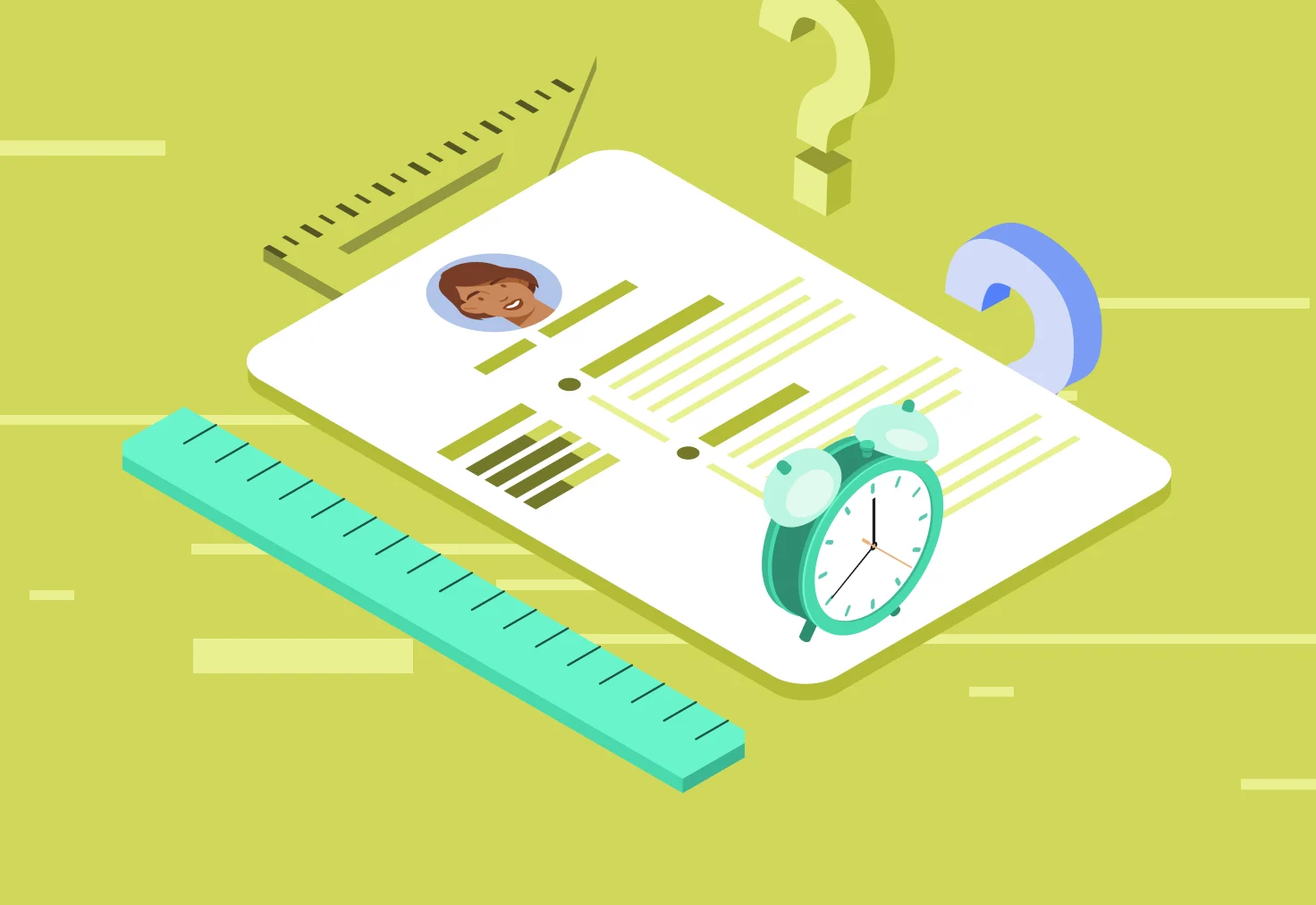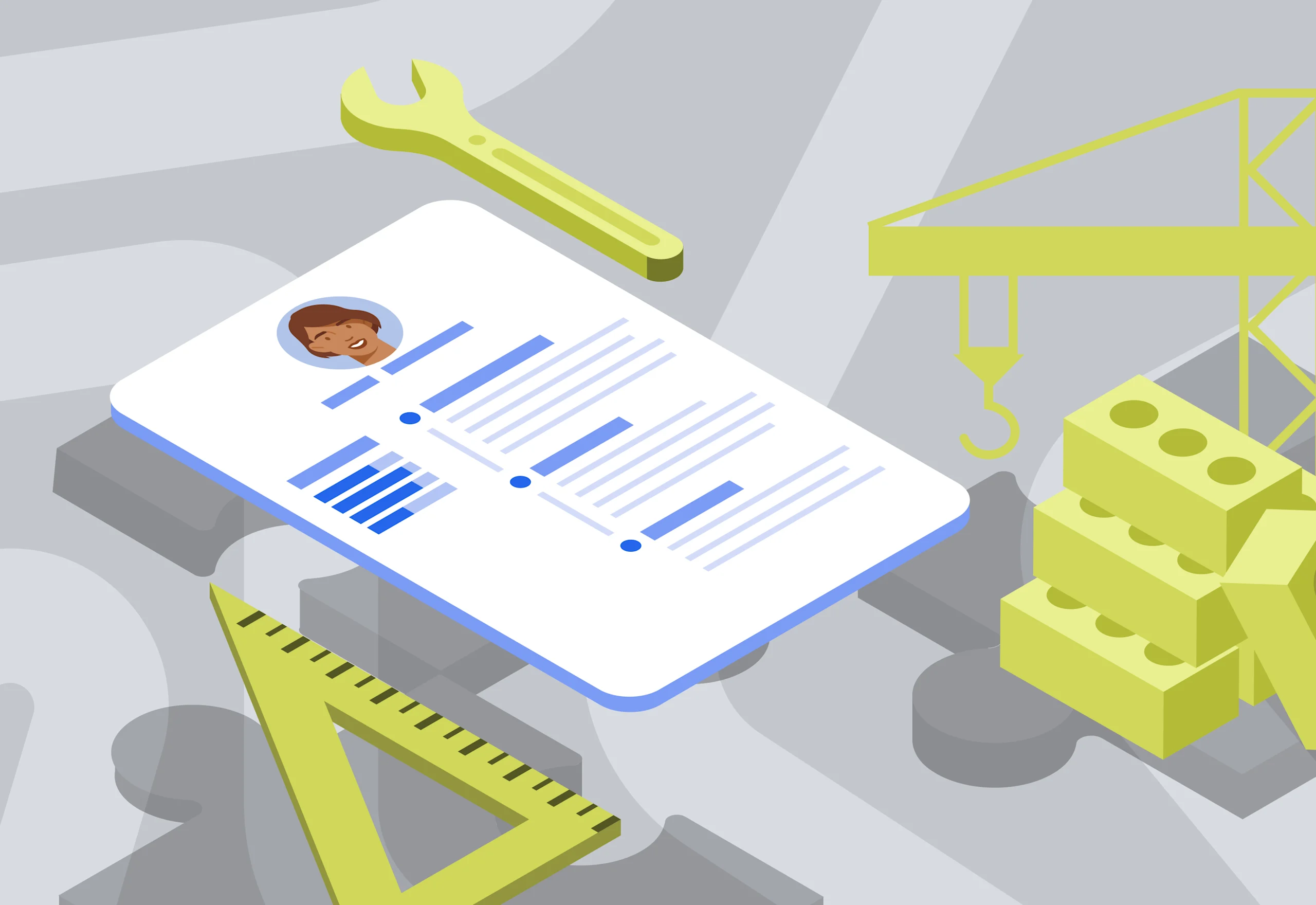Formatting your resume in a proper way is one of the most important steps you want to take before you finally hit that “submit your job application” button. Besides choosing the appropriate resume length, font style, and size, this also includes setting suitable resume margins.
Naturally, you might be wondering—What are the standard margins? How or where do I even set these?
The good news is—we have the answer! All you need to do is keep reading this all-embracing guide on how to set resume margins like a pro in 2025!
Key Takeaways
The standard margin size should be around 0.5 to 1 inch (or 1.2 to 2.4cm).
Resume margins are important because they make the information on your resume readable and neatly organized.
The standard text alignment for a resume is the left alignment.
Besides suitable margins, you can use bullet points, a simple font style, and a regular font size to make your resume neater.
It’s recommendable to maintain your resume ATS-friendly by avoiding fancy visuals.
What Is the Standard Resume Margins Size?

The standard margin size for a resume should be anywhere from 0.5 to 1 inch. If you need the resume margin size in cm, this would be between 1,2 and 2,4 cm.
Adjusting your margins is important, as they make your resume look professional. Your document may have too much white space if you leave them too wide. On the other hand, your resume sections will be too crammed if the margins are too narrow. So, a proper margin size will ensure that the information is highlighted properly without making your resume look too stuffy.
Besides this, since recruiters have limited time to check out all the resumes they receive, they often skip ones that look messy.
Although the standard margins for resumes are not mandatory, they are way more appreciated by recruiters than other, customized options. Since hiring managers have limited time to check out all the resumes they receive, they often skip ones that look messy and pay attention to ones that meet the standard criteria.
On the other hand, the only time when you can use a fancier format is when you are applying for a . For anything else, it's best that you stick to the standard resume margin template.
Resume Text Alignment
Aligning the text on your resume is simple—you should definitely opt for left alignment. This doesn’t only include the text within the different parts of your resume but also the titles of your resume sections and the bullet points within them.
If you’re curious about whether there’s any situation where you can use other alignment options, the short answer is—yes, there are. In some cases, you can use the center or right alignment if you want to emphasize some parts of your resume.
For example, your name and contact information sections can always be centered. On the other hand, the timeframes of your past academic and work experiences can be aligned to the right. Still, apart from that, every other nook and cranny of your resume should be aligned to the left.
Margins For Creative Resumes

Usually, sending a creative resume is not recommended. We know what you’re thinking, and yes—the standard resume format and margins aren’t necessarily that pretty and fun to look at, but differently formatted resumes can easily result in rejection.
First of all, many companies use ATS (applicant tracking systems) to review the resumes they receive more easily. Sadly, this software won’t be able to recognize your fancy formatting, as it’s programmed to recognize simple formats.
Secondly, even if your resume reaches the recruiters, they will probably have no time to figure out the format. Not many of them will understand and like your style and design choices, so it's best to stick to the traditional resume format and margins all along the way.
How to Set Resume Margins The Right Way
Setting your resume format margins will depend on which program you decide to use. To help you out, we offer you two mini-guides on getting this done in Microsoft Word and Google Docs.
How to Set Resume Margins in Microsoft Word
If you’re used to Word and want to set your resume margins in this program, you should:
Click “Format” at the top bar of your screen—this will show a drop-down menu.
Select “Document” from the drop-down menu.
Check if the “Margins” box is highlighted—if not, check it.
Use the arrow keys to set the size of the top, bottom, left, and right resume margins, or do it manually.
How to Set Resume Margins in Google Docs
If you believe that Google Docs is a way better option for you, you can set the resume margin size by doing as follows:
Open Google Docs.
Click “File” at the top bar.
Choose “Page setup” from the drop-down menu.
Manually type the preferred margin size.
Press “OK” to save.
Once you manually typed out the margin size, you can then opt for saving those measurements as default to help save time for your next documents as well.
Resume Margins for Print

To ensure that your margins remain the same once you print out your resume, you can:
Resume Margins Tips
Use a good printer that ensures no ink bleeding. The best thing is to use a laser printer, as it’s the most precise one.
Check out the best resume paper options. The recommended paper type contains at least 75% cotton.
Use the best font options. The best fonts to use for a sleek resume on paper are serif fonts, such as Arial, Times New Roman, and Courier.
Select the proper printing size. A resume should be printed on A4 paper.
Additional Formatting Tips
You’ve finally learned everything about resume margins, but what else do you need to do to ensure proper formatting?
To make the process easier, you must:
Additional Tips
Use bullet lists. Bullet points help you structure the crucial information in your resume (like soft and hard skills and work experience) into logical sections. They also allow you to showcase multiple responsibilities, achievements, and positions you have worked in in an organized way.
Check the font style and size. Choose simple fonts that are usually recommended for resumes, such as Helvetica or Times New Roman. Besides the font style, the resume margin and font size also go hand-in-hand. Try to size your font at around 11pt and nothing higher (except for headings).
Divide the text of your resume into paragraphs and sections. Not only does this make the resume flow better, but it also makes it look more professional and easy to read. Recruiters often give up on reading resumes that look like a massive, sloppy chunk of text.
Recheck for any spelling or grammar mistakes. The ATS scanner looks out for specific keywords within a resume and will therefore skip through anything that doesn’t fit its requirements, including typos and similar errors.
Avoid adding visuals. Sadly, ATS doesn’t recognize images, either, so you shouldn’t include any pictures, graphs, or tables in your resume.
Besides meeting all these criteria, the best way to check if the formatting is fine is to use an ATS checker (such as SkillSyncer) to have your resume reviewed for free.
Closing Thoughts
Would you look at that? You’ve made it to the end of the guide!
We hope that all of our tips and tricks have helped you get the answers that you were looking for. Long story short, keep in mind what the standards of formatting resume margins are, and make sure you meet them to maximize your chances of creating a neat resume, passing the ATS scan, and getting that job you want so much!


